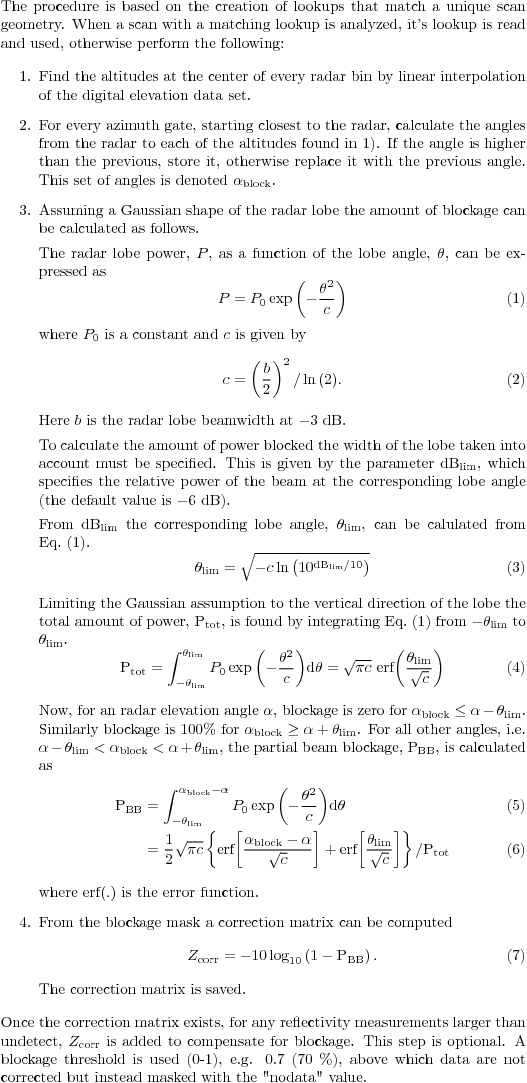BALTRAD
1. Algorithm name
Beam blockage - BEAMB
2. Basic description
Beam blockage on individual reflectivity scans is calculated and the associated power loss is determined and optionally compensated.
a) Physical basis of the algorithm
Reflectivity measurements behind a partially blocked radar beam is weakened. By assuming a uniform beam filling this loss can be compensated.
b) Amount of validation performed so far
Indirect validation using one month of European data from Odyssey, documented in Michelson and Henja (2012).
c) References (names and contact information of all developers during the evolutionary history, scientific papers)
Lars Norin and Anders Henja, Swedish Meteorological and Hydrological Institute, lars.norin@smhi.se, anders.henja@smhi.se
Michelson D. and Henja A., 2012: OPERA Work Package 3.6: Odyssey additions. Task 3. Tuning and evaluation of “andre” tool. EUMETNET OPERA Working document WD_2012_02c. 20 pp.
3. ODIM metadata requirements for I/O
Besides mandatory attributes gain, offset, nodata, undetect, nrays, nbins, lat, lon, height, elangle, and rscale, the optional metadata on beamwidth is also needed.
4. Input data
a) What kind of radar data (including the list of previous algorithms and quality flags applied)
Reflectivity data.
b) Other data (optional and mandatory, applying “universally” agreed formats, geometry)
The algorithm requires GTOPO30, a global 30 arc second digital elevation data set. This data set is freely available from http://usgs.gov/. Beamb does not alter or reformat the GTOPO30 tiles; they are read and used “as is”.
5. Logical steps, using any of: text, flow charts, graphics, equations (or references to equations), conditional branches in “all possible cases”.

6. Output.
The result is an ODIM_H5 file containing a beam blockage corrected reflectivity field.
a) Data type using ODIM notation where possible, e.g. DBZH
TH, DBZH, DBZV
b) Added quality indicators
A quality index ranging from 0 (lowest quality) to 1 (highest) is obtained from the blockage mask. This may seem counter-intuitive, as blockage would normally be expressed the other way around, but this is done to create an ODIM-compliant quality indicator field.